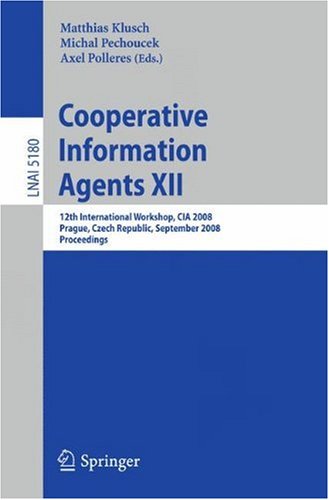

Most ebook files are in PDF format, so you can easily read them using various software such as Foxit Reader or directly on the Google Chrome browser.
Some ebook files are released by publishers in other formats such as .awz, .mobi, .epub, .fb2, etc. You may need to install specific software to read these formats on mobile/PC, such as Calibre.
Please read the tutorial at this link: https://ebookbell.com/faq
We offer FREE conversion to the popular formats you request; however, this may take some time. Therefore, right after payment, please email us, and we will try to provide the service as quickly as possible.
For some exceptional file formats or broken links (if any), please refrain from opening any disputes. Instead, email us first, and we will try to assist within a maximum of 6 hours.
EbookBell Team

4.7
16 reviews
ISBN 10: 3540858342
ISBN 13: 9783540858348
Author: Matthias Klusch; Michal Pechoucek; Axel Polleres
This book constitutes the refereed proceedings of the 12th International Workshop on Cooperative Information Agents, CIA 2008, held in Prague, Czech Republik, in September 2008. The book contains 5 invited papers and 19 revised full papers which were carefully reviewed and selected from 38 submissions. The papers are organized in topical sections on Trust, Applications, Coordination and Communications, and Negotiation.
cooperative internationalism
cooperative investigation
cooperative intelligence
information cooperation
a cooperative
Tags: Matthias Klusch, Michal Pechoucek, Axel Polleres, Cooperative